As an Amazon Associate I earn from qualifying purchases.
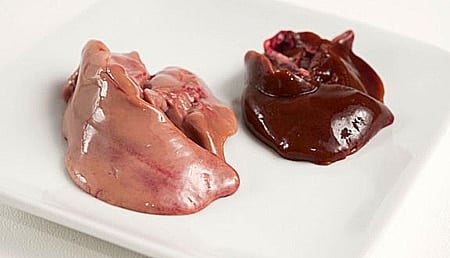
Sometimes nature presents you with something so special you have no choice but to bow down to the ingredient and present it as purely as you can. I know, Jaded Ones: You’ve heard this mantra aped by hundreds of chefs hundreds of times — “honor the protein,” and such. It’s a cliche. But in this case it’s warranted.
I present to you wild foie gras. Yes, it exists. Under certain circumstances, wild ducks and geese will indeed gorge themselves far beyond their normal nutritional needs, to the point where they develop a fat layer comparable to that seen on a domestic duck, loads of fat around their gizzards and guts — and, most importantly, livers that develop into the lovely wobbly bit you see at left in the picture. Doctors call the condition steatosis, in which liver cells accumulate lipids. I call it yummy.
Not all ducks seem to do this. You will rarely see a diver duck this fat, and you will never see a snow goose this sclerotic. Mostly you see it in seed-loving ducks: Mallards, gadwall, wigeon, green-winged teal and most of all in the northern pintail, anas acuta.
This liver came from a pintail, a hen I shot on Opening Sunday at the Delevan National Wildlife Refuge, just outside of Maxwell. Even before I finished plucking this bird I knew I had something special: It was as fat as a domestic, and since I’d shot it in the head, there was no meat damage. Once I opened it up, I saw fat around the guts and a glob coating the gizzard. A good sign.
When I saw the liver, I actually gasped — it was exactly the color of foie gras. Understand that you just don’t see livers this fatty very often; a wild foie turns up maybe once or twice a season, tops. How fatty are we talking? Look at the other liver in the picture: It came from another pintail I shot that day.
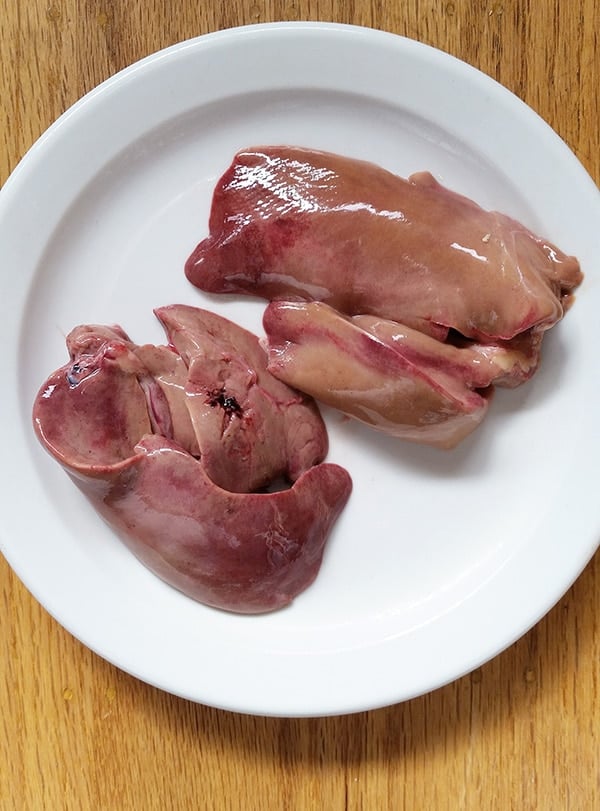
Getting a wild foie is reason to rejoice. Especially for me. You see, I normally hate the texture of liver. Yes, I eat lots of livers throughout the year, but I mostly grind them into sausage, like my Italian mazzafegati, or mash them into a ravioli filling. I am particularly fond of a savory liver creme caramel, too. But straight-up liver? Not for me.
Yet I do like foie gras, even though I know that the practice of force-feeding the ducks and geese, called gavage, is questionable. That tube does hurt the birds a little, studies show, but not so much as the animal rights people would have you believe. There is a Spanish producer, Pateria de Sousa, that makes an exquisite foie without gavage by laying out lots and lots of figs, acorns, lupini beans and olives for their geese to eat in fall. The Spanish foie is not so large as French force-fed foie, but it did win a blind taste test in France in 2006. De Sousa’s foie has become the darling of the food world.
The reason the Spanish method works is the same reason we hunters occasionally see our wild foie gras: Waterfowl instinctively gorge in late summer and autumn, first to prep for the migration south — often a flight of more then 2,000 miles — and then to recover from that long journey. The domestic Spanish geese (which are a cousin of our wild specklebelly geese here) are slaughtered right after they’ve gorged for their “migration.”
Our wild foie is largely a product of two things: Waterfowl recovering from their migrations — California is a wintering ground for ducks and geese — and the rice industry. Ducks eat what’s around them. One study of pintail feeding behavior done in Kern County, about 200 miles south of the rice fields, shows that during the hunting season pintails there eat mostly swamp timothy and barnyard grass, supplemented by midge larvae. Pintails that far south do not put on the fat our ducks do.
Another study — conducted where we hunt, in rice country north of Sacramento — found that pintails were getting 97 percent of their food from plants, as opposed to 72 percent in Kern, and that close to 99 percent of the northern pintails’ plant diet was rice.
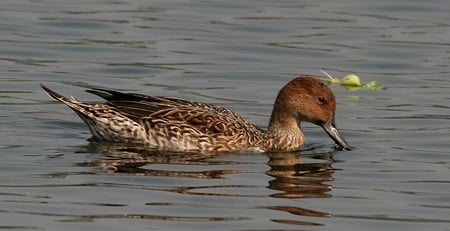
Rice is extremely high in energy; it’s the pintail equivalent of eating junk food. Rice is so full of nutrients that the birds, which, like many omnivores (humans included) engage their “thrifty gene.” This gene tells the body to store as much energy as possible because the animal is programmed to live in a feast-or-famine world. Incidentally, teal, wigeon and gadwall do the same thing in the rice fields — as do specklebelly geese, the cousins of those Spanish foie geese. They’ll literally become flying butterballs.
The best study on the eating habits of pintails shows that the birds shift to invertebrates (bugs and shrimpy things) late in the hunting season, so they can boost their protein intake while they get ready to breed; this can make the birds taste slightly fishy. The study also shows that hens stay fatter longer than drakes, a fact I’ve seen consistently in the marshes.
Bottom line for hunters: If you want to eat fat ducks and get a chance to eat some wild, natural foie gras, shoot as many pintails as you can from October through early December.
I can hear you thinking: All this is very nice, Hank, but how did that liver taste? I felt that I needed to cook it simply. I got a frying pan screaming hot and added some fat I’d rendered from elsewhere on this same duck. I seared the liver hard for 30 seconds on a side, then sprinkled some Italian fleur de sel on it. Alongside went some balsamic vinegar reduced to a syrup.
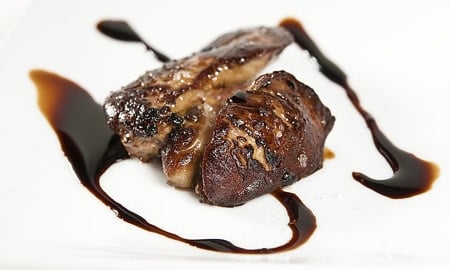
It was the first liver I’d ever met that I liked on its own. Crispy, soft, meaty, fatty. Maybe it was the fact that this morsel — just three bites at best — was so special it clouded my thinking. Maybe it was the salty sweetness of the Italian salt, the sweet sourness of the balsamic. But I don’t think so.
If there was ever a reason for a foodie to take up hunting, this is it. Wild foie exists. It’s out there in the marshes. You just have to find it.
* * *
NOTE: To all those who want to fight the eternal foie gras battle on this site, take it somewhere else. I am writing about a natural phenomenon in wild ducks, not about the 4,500-year-old practice of fattening the livers of domestic geese. Got it? Good.

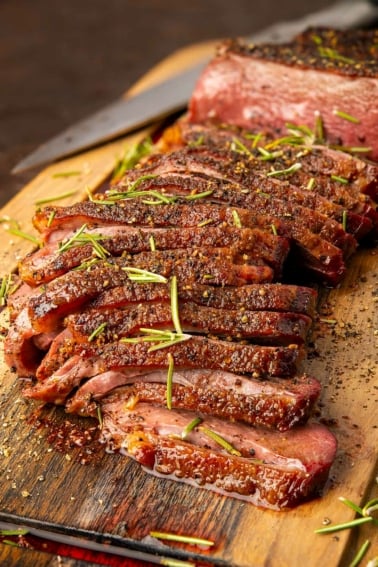
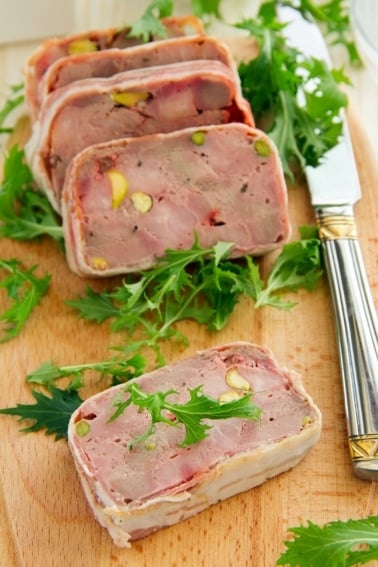

Thank you for this post. I have Hashimoto’s and am severely anemic (most likely from stress and trying to be a vegan for a year at a time several times). It inspires me to take my bow out and test my skills. I very much appreciate the research and knowledge you put into your blog on the occasions that I have read it. I very much enjoyed your post on fir tips as well. 🙂
Thank you! I have 6 duck livers half are large and pale. Will use those as a lovely opportunity to try home reared domestic, Oklahoman, naturally fattened, duck liver – foie gras of the prarie 🙂
Using your advice to cook and serving with port reduction with a touch of orange rind, with a puff pastry square. And the darker ones to make a pate. Delighted to read this!
This post reminds me of Dan Barber’s TEDTalk about foie gras and how ducks will naturally gorge before winter. Nature will provide if you let it. =)
Thank you sir for this info. I am writing a College paper on the controversy of foie gras. My argument in the paper is that it can be done cruelty free. Thank you again and if there any other articles you have written please send them my way
I stumbled on your site while looking for information on Whooping Crane foie gras, and I have to say I like what I see. It’s entirely logical that any bird from a swallow up to a crane will store energy in its liver for the big migratory journey, so I’m wondering how steatotic crane liver (can’t call it foie gras if it’s not from a duck or a goose, according to the French!) would taste.
Does anyone here have any experience of that?
John: Where on earth are whooping cranes not protected?!!? They are HIGHLY illegal to shoot here in North America. We can hunt sandhill cranes, but not whoopers.
Hank,
Does the liver hold up to freezing or should it be eaten as soon as possible? I suspect if I were to find one like that it wouldn’t make to through the evening between my wife or myself.
Warren: Yep. It freezes fine.
I was looking for a restaurant on the Vegas strip that servers foie gras for a friend of mine that is there this week and stumbled upon this article by Hank Shaw. Foie gras was my guilty pleasure on occasion when fine dining, but with the California outlaw I have been without. My son just passed his hunter safety test at the ripe age of 9 and will be in the blind with me starting October 18th as a shooter. We’ll harvest a couple hundred ducks this seasons, mostly Mallard, Teal, Gadwall, Widgeon and Pintail. We pick our ducks whole and eat every delicious morsel. I will be adding duck liver to the meat pile we consume this year given this awesome tid bits in this article! Great information and thanks for the new idea. Shoot straight and best of luck this fall!
Where can I buy fresh duck livers in the Houston area? I am dying to make a duck liver pate and no one sells duck liver.
Apart from frozen foie gras, I’ve never seen duck livers for sale anywhere. In my experience, the only place you can get a non-fatty duck liver is when you buy a whole duck. The liver is usually included in the cavity.
Thanks to Duck, Duck, Goose, I am plucking all my wild ducks and saving the internals rather than just the breast meat. Last Saturday I shot a pintail, and after plucking, I noticed it has a lot of fat (skin looked whiter than normal). I reached inside the cavity, and voila! a light brown liver. I followed the same cooking prep (30sec MAX per side) and had a fantastic 4 bite hors d’oeuvre (no sharing!). All that was missing was the Sauternes!
Good call on the wild foie! I’m keeping my eyes open for fatty ducks from now on!
Hank – a great post. So much that I’ll forgive you for shooting a hen pintail. 😉
Yum. It’s been awhile since I have seen a wild duck liver that looks like that — shot in the Pacific Flyway. Central Flyway birds are more apt to have this condition.
Todd: Remember, with the exception of mallards and Canada geese, waterfowl don’t spend a lot of time in one place. So the birds you shot in the Bay are most likely not resident birds, meaning their livers are probably just fine. Also remember, a couple livers won’t hurt you — eating 50-100 might, though…
I just got into hunting, and brought down a pair of Scaups the other day. I was tempted to eat the livers, but shied away from eating them because of the SF Bay and some of the lingering pollutants/heavy metals that go up the food chain. What is your take on this issue?
Great post. I buy my duck livers for paté and terrines at the Beaune market from a man who hunts wild ducks. Sometimes there is a fattened, more pale, larger liver in my bag when i get home. This is the wild Foie Gras. I have cooked the two (i love pan fried livers) and it’s richer, creamier with a finer taste. Im really happy i found this blog. Keep up the good work.
PS. Love your note at the bottom.
Hi Hank,
Great article! I was recently looking at at talk on TED (ted.com) about a similarr phenomenon, a “natural gavage” that a farmer in Spain is practicing. Below is a link to the talk. Thanks for the good insight!
https://www.youtube.com/watch?v=gvrgD0mAFoU
All the Best,
Ryan
I have to admit that I’m thinking about my liver now and feeling all wuggley. No more rice for me – although I suspect that the Port downstairs is more of a problem. I wonder if the livers go back and forth? Too bad there’s no way to see a duck liver before the migration gorging and after.
This is beautiful. Amazing. Thanks for sharing.